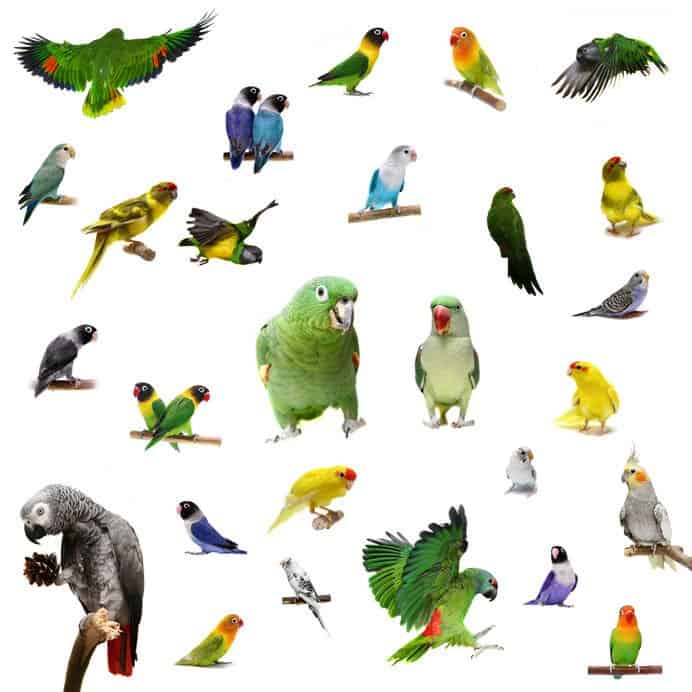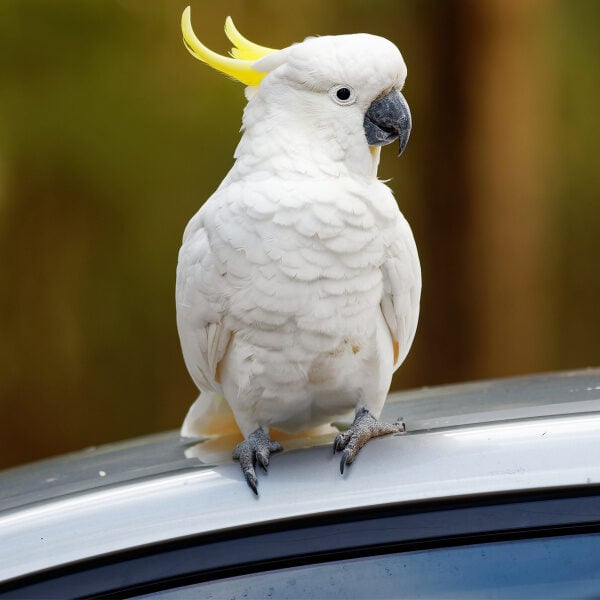
What Is a Good Summary About How It Is to Own Parrots (Macaws Specifically)?
Last Updated on by Mitch Rezman
I don’t know that there’s enough storage space on the Quora servers to answer this.
I read that parrots are loud, noisy, and messy – a lot.
Then again so are children.
Let’s start with a top-level explanation.
Pet people in the disciple category will always react negatively towards the word own preferring instead to call it pet bird companionship.
In reality, birds are the most owned pets we can have.
We have to lock them up in a bird jail.
Some people call it a birdcage.
Others call it a bird home.
Move the cage to an open window then open the bird cage door and the bird calls it, “I’m outta here”.
A pet dog, cat, exotic reptile, aquarium fish enthusiast is never prepared for a relationship with a bird until they’ve lived with one.
With the exception of fish, most pets are terrestrial.
Birds are not, they can fly.
This dynamic cannot be underestimated.
Light, sight, and flight are what drives a bird.
It’s how they find food, seek shelter and or safety, finds a mate.
If you going to bring a bird into your home in North America and you do not provide a 10 to 12-hour daylight light cycle with full-spectrum artificial lighting over your bird’s cage – you’re setting yourself up for failure.
All these threads consistently start out about birds being loud and messy.
A dog doesn’t care if it gets dark at 5 PM in December.
A bird with 99 million years of instinctual expectations doesn’t understand the shift in light cycles.
This can trigger screaming, feather destruction, and aggressive hormonal behavior.
A good portion of a caged bird keeper’s sanity can be brought in check by the proper use of light and light cycles as a tool to help keep your bird(s) centered.
We can even stop prolific egg-producing hens using light as a tool – but that’s another blog post.
Takeaway: Light, sight and flight are 3 of 6 common traits all birds possess.
How many species of parrots are there?
It said between parrots and parakeets somewhere around 750 unique bird species.
You asked about macaws (specifically) and the majority of people who talk about macaws treat them as a single species.
We’ve identified 43 species of macaws ranging from the 12-inch noble macaw to the 44 inch long Hyacinth.
For anyone to write that every species of macaws, parrots in general, conures (there’s about 120 species alone) can be categorized into a short list of behavioral characteristics.
Nothing can be farther from the truth.
I make my living helping people keep birds safe and healthy in their home.
It’s important for me to get things right.
I also like to remind people that parrots got along quite well for 99 million years with no human invention till around the 16th century when Al. T. Great got a big parakeet that went on to be named the Alexandrine parakeet after him.
Since then we’ve gone from absolutely knowing nothing about birds care – look at all the round cages through the ages.
Now, thanks to the Internet, especially Facebook we are drowning in information defining bad captive bird care.
Being a pet lover does not necessarily make a good pet bird keeper.
The second three things that set birds apart from all other animals while being common to birds are their beaks, zygodactyl feet and feathers
With this as a starting point I read (this question Quora) that one of the parrot caregivers regularly trimmed their birds talons and beak.
When considering a bird one of the first decisions we need to make is do we allow the bird to be Flighted or clipped their wings.
There’s arguments on both sides but I will tell you unequivocally that a flighted bird is a happier, healthier and safer bird.
Editor’s note: If you don’t want to spend 5 to 10 minutes a day training an animal don’t get an animal.
Beaks are one of the most important parts of a bird’s anatomy.
They use their beaks not only to eat but to explore and climb.
Beaks should be left alone by humans and never trimmed by someone without veterinary training.
Although beaks appear to be solid keratin they contain lots of nerves called corpuscles of herbst that can be easily damaged with the most well-intentioned of trimmers
Humans get annoyed when their bird’s nails cling to their clothing especially when they try to remove said bird from their person.
The go to solution is a nail trim.
But wait – what happens when a bird with recently trimmed nails falls asleep on a single diameter smooth hardwood over-sized perch?
Oh and the birds wings were recently clipped along with the nail trim – you know those two long appendages used not only for flight but for balance as well?
Potential for falling off the perch or any perch for that matter is escalated using these bird care protocols.
and no Kemosabe, birds feathers do not connect to their neurological system so wing trimming will not “calm down” a hormonal bird, it will only make the bird more miserable.
Feathers – are what define birds.
A small bird like a budgie will have 3000 to 4000 feathers.
Larger birds like umbrella cockatoos may have up to 8000 feathers.
Feathered factoid: ducks can have up to 12,000 feathers – or more.
Feathers are part of a Integumentary system – our Integumentary system is skin.
There’s only one species of dog
so they are easy to feed and toys like a single tennis ball suffice for enrichment.
There are no one size fits all bird toys
The word “toy” is also quite misleading.
Bird toys serve to
- Entertain
- Teach
- Enrich
- Offer privacy
When you embark on your first cagescaping project you’ll want to know the difference between bird toys.
https://www.youtube.com/watch?v=X4yG7a3fsu0
The different substrates available to birds – hardwood, softwood, rope, seashells – and the list goes on.
You must not only understand the nuances of bird toys but it’s best if your cage is bird ready when you bring the bird home.
I hear far too often that people will bring a new bird into their home and give it a week or two to “settle in”
Remember these are animals that have been able to survive in the wilderness for decades with no human intervention.
https://www.youtube.com/watch?v=GfHID6m4Aqw
Birds need to be stimulated.
They are flock animals.
They don’t need to settle in.
You and family members or residents of the home have now become the bird’s flock.
The bird wants to eat with you, socialize with you and maybe even make you its mate.
This is where we start drilling down further on species.
Let’s talk about the mating thing first.
You asked about macaws.
It’s my understanding that most macaws mate for life in the wild but a single macaw in a household is usually happy to interact with most family members.
Conversely, African greys will bond with an individual in a household at a young age but instinct drives both the Congo and Timneh species to rebond with a different family member at the age of five or six.
This is actually something that the species does to help eliminate inbreeding making its class more durable over time.
Further drilling down into species, we begin to subdivide parrots geographically.
Let’s start with South America.
The majority of people who write about parrots on Quora say parrots are loud.
I get it.
There’s a site on the Internet that you can listen to a moluccan cockatoo screaming at 157 dB exceeding the sound level of the 747 landing.
If you live in clustered housing and or get migraine headaches and or are sensitive to sound – don’t get a moluccan cockatoo or an umbrella cockatoo.
Conversely I’ve heard that Major Mitchell cockatoos, gang gang cockatoos and Citron cockatoos are relatively quiet.
Eclectus parrots native to the Solomon Islands, New Guinea, northeastern Australia and the Maluku Islands are great family birds and don’t make a lot of noise.
From what I surmise most South American birds are vocal, conures in particular.
Even the small green cheek can get on your nerves, speaking from experience.
We had an employee who brought one to work daily – I love birds but that little conure was not quiet for more than two minutes all day and I found it annoying over time.
Robert, the bird’s owner was unaffected.
But then again he spent years working in a bird store that specialized in selling singing canaries.
Do I need to say that again to make my point?
Macaws can be quite vocal.
When Catherine and I did bird shows, while setting up at much to early of an hour (for my liking) we would hear the Amazon breeder’s, birds coming into the gymnasium or whatever venue we were at.
It was like bringing in some sort of club where the birds would just be jabbering about who knows what?
The noise from their interactions was persistent for hours.
A South American noise exception may be the parrotlet.
It’s small size makes it far less noisy than a bird 10 times it’s size.
Just don’t try to tell one of them, they are a small bird.
The only problem with parrotlets is, if they were to see themselves in the mirror they think would they were a Green wing macaw.
Editors note: Bigger bird, bigger brain.
Migrate across the Atlantic Ocean from South America to the continent of Africa and we have a whole new subset of birds.
Poicephalus parrots like Senegal’s, Red belly’s and Myers are quiet parrots.
I live with a Senegal.
My worst case scenario vocally is when I call her my “whiny green Senegal”
Like when I have the audacity to leave the room she’s in.
We live on the first floor of the three flat apartment.
No one hears her outside of our place.
She’s a true parrot who isn’t noisy and not very messy yet only weighs about 120 g – the size of a fat cockatiel.
Jumping around – we also have four budgies (Australia) I call them my vocalized flower arrangement.
They just chatter, all day long and it’s – soothing – to listen to.
We talked about African grays, who yes can be vocal but with proper interaction their vocalizations can be pleasant.
Just don’t piss one off.
Cape parrots, a member of the poicephalus family can be a little noisy but you can also consider lovebirds – a species unto themselves.
https://www.youtube.com/watch?v=aCqwIRBpNmw&t=105s
Small, lovable when socialized – great pet birds.
In conclusion, pay your due diligence remembering the devil’s in the details.
Drill down and focus on the species you’d like to become intimate with.
In conclusion I advocate that you learn more about a unique species and then decide if you want to accept the privilege of bringing one of these magnificent creatures into your home.
written by mitch rezman
approved by catherine tobsing
your zygodactyl footnote
Author Profile
Latest entries
 The Traveling BirdJune 26, 2025Can You Name 5 Parrot Species That Are Living Wild in the USA?
The Traveling BirdJune 26, 2025Can You Name 5 Parrot Species That Are Living Wild in the USA? Bird BehaviorJune 26, 2025How is it Parrots Are Problem Solvers Social Animals and Even Use Tools?
Bird BehaviorJune 26, 2025How is it Parrots Are Problem Solvers Social Animals and Even Use Tools? Bird & Parrot AnatomyJune 25, 2025How a Tiny Chemical Modification Makes Parrots Nature’s Living Paintings
Bird & Parrot AnatomyJune 25, 2025How a Tiny Chemical Modification Makes Parrots Nature’s Living Paintings PigeonsJune 20, 2025How Do Parrots Thrive in Cities Outside Their Native Habitats?
PigeonsJune 20, 2025How Do Parrots Thrive in Cities Outside Their Native Habitats?

